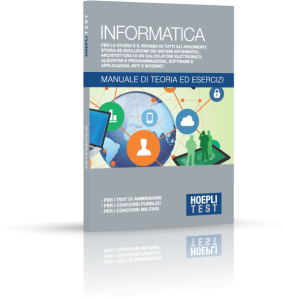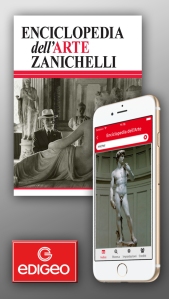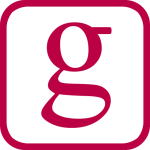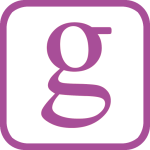It is fairly common belief that mobile apps are an easy way to make money, and people often ask me how to publish one and, above all, how much it costs. Actually, a brief survey is enough to discover that moving from the idea of an app to its realization is not so simple.
 The process to design, develop and publish an app is conceptually similar for all app platforms (Android, iOS, Windows etc.). However, to avoid falling into the wrong hands, it is useful to get an overview of the vatious steps and information that are needed to address such adventure.
The process to design, develop and publish an app is conceptually similar for all app platforms (Android, iOS, Windows etc.). However, to avoid falling into the wrong hands, it is useful to get an overview of the vatious steps and information that are needed to address such adventure.
Idea
Although banal, all the great apps started from an idea. Whether it’s a video game or a business app, the starting point is to understand what market need you want to satisfy by asking yourself some simple questions.
- Are there already apps that solve this problem/need?
- If the answer is no, what are the reasons?
- If the answer is yes, who are the competitors and how strong are they on the market?
- What existing technologies can be used (GPS, social media, chat, etc.)?
- Is the app standalone (for example, an off-line game) or does it require continuous input (content, feed, updates, etc.)?
- The app will be free or paid and what will be the budget for its realization (and the possible economic return)?
Development
Having decided that the idea is valid and profitable, you move on to its developemnt. To get to a prototype for publication, you need to go through several steps:
- Decide on which platforms the app will be published (Android, iOS, Windows, etc.)?
- Choose which programming language and development platform will be used to develop the app. Will native or languages be used (for example, Android Studio for Android, xCode for iOS or Visual Studio for Windows) or development systems that allow you to share code across multiple platforms (for example, Cordova, Ionic, Xamarin etc.)?
- Design the app’s structure and the user interface by translating the idea into a project that can be converted into programming instructions?
- Write the app based on the design guidelines, a process that requires a good interaction between the various professionals.
- Build and test a prototype. If everything goes as planned, you’ll get a prototype of the app that must be tested by non-developers or at least by people not involved in the development to assure a more genuine experience.
Publish
You might think that once the development and test phases are completed, the work is done. This is not the case: publishing an app is a critical step and involves decisions that can determine the success or failure of the whole project.
- Choose the online stores on which to publish the app (Google Play, Apple Store, etc.)
- Follow all the registration and certification procedures of each app store to be able to publish, remembering to avoid delegating the operation to consultants or external companies
- Decide prices, availability (such as countries and territories) and any promotional campaigns
- Create descriptive texts, images and videos to promote the app on each store, following the provided specifications
- Upload the app for review on each store
- View the status of the app and resolve any audit issues until the final approval
All the steps described so far are the key steps to create an app. Understanding the cost of the whole process in terms of time and money is quite difficult. The only development cost can vary from a few thousand euros to tens of thousands for the same project, making it very difficult to choose the right strategy and the right interlocutor. Often you will find professionals able to cover only a part of the project (programming, creative design, communication, online store management etc.), therefore the final success will depend on a good knowledge of all the steps.



 However, this great user-friendliness is not much useful when it becomes necessary to go beyond the simple setup of a password, someone asks you to manually configure an email account, or you need to manage your ADLS router at home. The problem is that under this superficial layer of ease of use, there it is still a need to know the world of tech concepts that remain essential to use the myriad of devices that surrounds us. This is true for simple do-it-yourself tasks, but particularly to deal with study and work.
However, this great user-friendliness is not much useful when it becomes necessary to go beyond the simple setup of a password, someone asks you to manually configure an email account, or you need to manage your ADLS router at home. The problem is that under this superficial layer of ease of use, there it is still a need to know the world of tech concepts that remain essential to use the myriad of devices that surrounds us. This is true for simple do-it-yourself tasks, but particularly to deal with study and work.
 Good personal culture is not only useful in lounges conversations, and encyclopedias are an ideal tool to develop and expand it. In addition to general works, there are encyclopedias about specific areas such as medicine, law, music, history, and so on. The latter provide more in-depth information than the general ones, while the former are an excellent starting point for venturing into greater depths.
Good personal culture is not only useful in lounges conversations, and encyclopedias are an ideal tool to develop and expand it. In addition to general works, there are encyclopedias about specific areas such as medicine, law, music, history, and so on. The latter provide more in-depth information than the general ones, while the former are an excellent starting point for venturing into greater depths.





 In a printed dictionary, the search for a lemma requires a certain mental and physical effort. You have to flip through the pages to find the correct section in alphabetical order, then you must scroll through the items until you find the one you want. This reading work can be tedious and time consuming, but often helps you to also find other terms in the context, making easy to learn new words, and helps you to keep your mind working, similar to “do mental arithmetic and not with the calculator”.
In a printed dictionary, the search for a lemma requires a certain mental and physical effort. You have to flip through the pages to find the correct section in alphabetical order, then you must scroll through the items until you find the one you want. This reading work can be tedious and time consuming, but often helps you to also find other terms in the context, making easy to learn new words, and helps you to keep your mind working, similar to “do mental arithmetic and not with the calculator”.

 Outsourcing? In-house?
Outsourcing? In-house?
